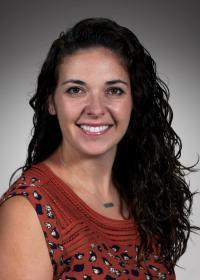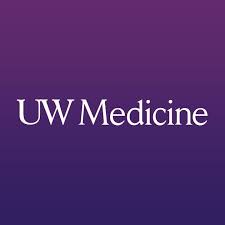

Teaching Associates bring unique skills to clinical practice
The UW School of Medicine and UW Medical Centers operate several concurrent missions – educating and training the next generation of medical providers, conducting research to advance patient care and medical innovation, and providing preventive and interventional care for patients and communities.
Many people are involved in each of these missions including students, physicians, staff, trainees, nurses, medical assistants and advanced practice providers.
What is an Advanced Practice Provider?
Advanced practice providers (APPs) are members of the patient care team with advanced degrees other than MD, which include physician assistants (P.A.-C), nurse practitioners (N.P.), certified nurse midwives (CNM) and certified registered nurse anesthetists (CRNA).
APPs have six to eight years of advanced education, depending on their specialty, and are licensed and board-certified by national organizations. Additionally, APPs participate in scholarship and continuing education and are active in professional development and specialty societies.
There are approximately 125,000 PAs and 263,000 NPs currently working in the US compared to approx. 727,000 physicians and surgeons.
“APPs are an integral provider on the health care team,” said Lia M. Barros DNP, AGACNP- BC, teaching associate in the Pulmonary Vascular Disease Program (Division of Pulmonary, Critical Care, and Sleep Medicine).

Barros has been with UW Medicine since 2007, after receiving her Bachelors of Science degree in Nursing from the University of New Hampshire.
She completed her doctoral degree in Nursing Practice at the University of Washington in 2018, and now serves as the Advanced Registered Nurse Practitioner (ARNP) with the UW Medicine Pulmonary Vascular Disease program.
What do APPs do?
“APPs blend clinical expertise in diagnosing and treating health conditions with an emphasis on disease prevention and health management," Barros said.
"They also receive specialized training in quality improvement science and translation of evidence into clinical practice.”
In many patient encounters, APPs act as the primary care provider - administering examinations, diagnosing and prescribing treatments. They are also able to support the supervising physician in specialty procedures and be the primary provider for acute care patients. Some studies have found that PAs can do the same work as doctors in up to 80% of encounters in primary healthcare settings.
Depending on specialty, APPs manage a variety of clinical tasks such as:
- Taking patient histories
- Conducting physical exams
- Ordering lab work, x-rays and other tests
- Delivering babies and perform women’s health exams
- Taking pre-operative histories
- Helping patients manage chronic conditions like diabetes or heart disease
- Treating acute illness on acute care units and intensive care units
- Making referrals to specialists or other services
- Performing procedures at bedside and in specialty areas
- Leading and implementing quality improvement programs
Patient satisfaction reported for clinical encounters with APPs have shown that satisfaction rates are on par with those for physicians and often, patients continue to choose to see their APP for future clinical visits due to their relatability and high competency.
Many medical centers value APPs as a way to meet the needs of a higher volume of patients and expand accessibility to broader communities. Furthermore, APP's specialty training in the translation of evidence to bedside practice brings a unique skill to clinical quality improvement.
"The presence of Nurse Practitioners adds this great overlap between clinical nursing and physicians," Barros said, highlighting the benefits that this blended skillset brings to the clinical environment.
Playing a multifaceted role
At UW Medicine, APPs not only provide clinical care but are involved in a number of research and scholarship projects, help implement and run quality improvement initiatives and sit on hospital and departmental committees that help inform many operational functions.
Barros is a prime example of the variety of roles APPs hold within the medical center.
In addition to her clinical experience, she founded and ran the International Nursing Program (INP) at UW Medicine, a critical care capacity building program for low- and middle-income countries through education, quality improvement research, and bidirectional nursing exchanges.
She also is also a member of the Department of Medicine Gender Equity Council (chairing the Family Support Subcommittee), has published research, and during the pandemic, helped author the Pragmatic Recommendations in Patients With COVID-19 in Low to Middle Income Countries.
APPs at UW Medicine
Within the UW School of Medicine, APPs have the academic title of teaching associate. The Department of Medicine is home to over 200 teaching associates who serve in essential roles in 9 of the Department’s 13 divisions.
However, despite the varying roles they play in clinical practice, quality improvement and scholarship, APPs are limited to the teaching associate title and do not have a promotional pathway the same way traditional faculty do.
Exploring the potential for expanding the professional promotion pathway for APPs can not only support job satisfaction and retention of skilled APPs but improve patient care by encouraging the supply high quality care providers.
“I believe our colleagues see our unique utility and value our role.” Barros said.
“This is why elevating APPs and encouraging their voice at the table is crucial at each level of care delivery, administration, education, and research. “